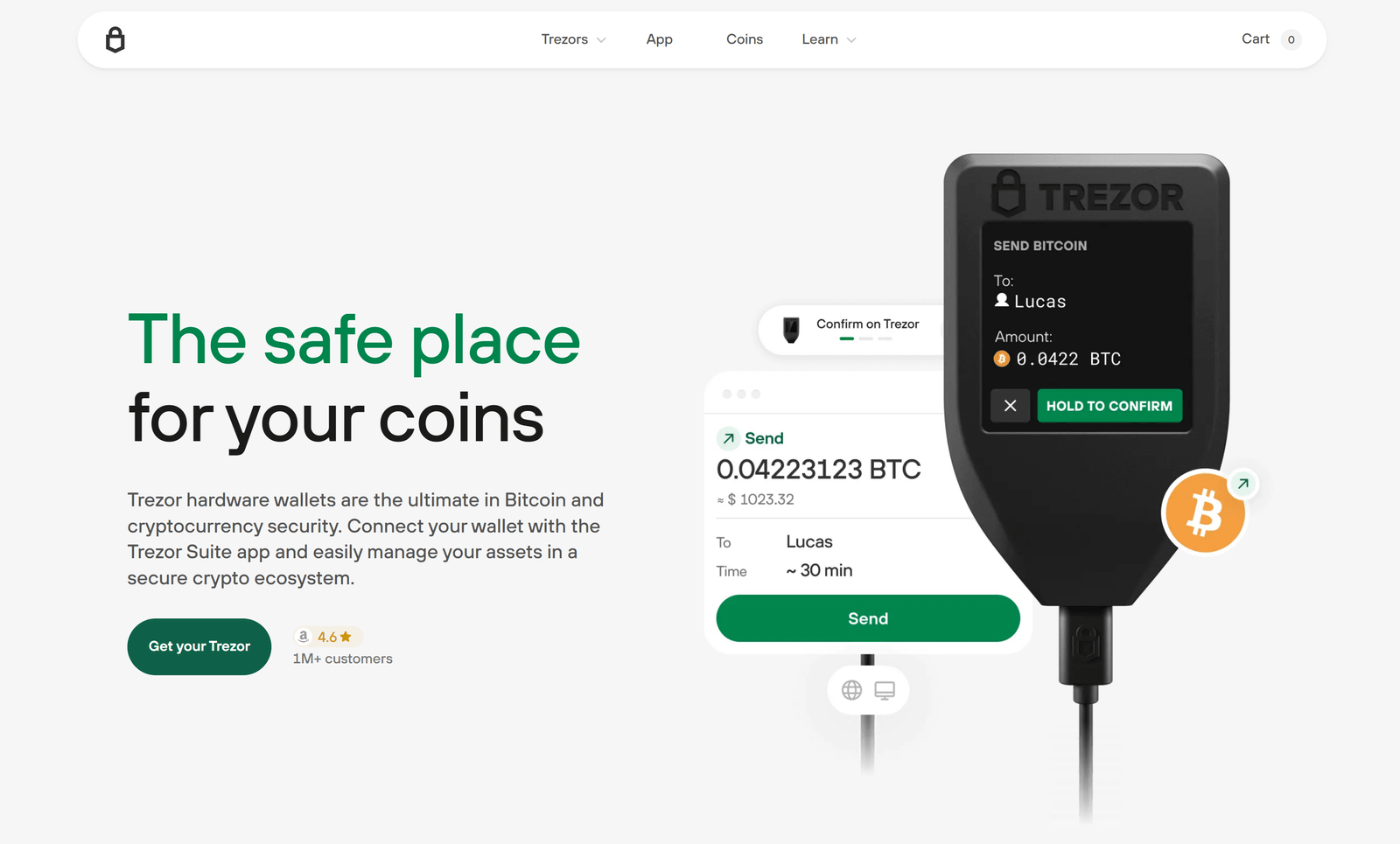Trezor.io/Start – Complete Hardware Wallet Setup Guide
The Trezor.io/Start process is where every Trezor user begins. It introduces you to the essential steps of setting up a hardware wallet — from connecting your device and installing firmware to creating your recovery seed and PIN. This guide provides an overview of the typical procedure, how it works, and the principles behind secure self-custody of your digital assets.
Purpose of the Start Process
Trezor.io/Start is designed to help you initialize your device safely and correctly. Unlike ordinary online accounts, a Trezor hardware wallet does not rely on passwords or cloud backups. The goal of the start process is to generate your private keys offline, inside your device, where they remain permanently protected. Every key and address created by your Trezor is verified directly on the hardware itself.
Unboxing and First Connection
Before powering on your device, inspect the holographic seal on the box. This seal ensures that the package has not been opened or tampered with. Connect the device to your computer using the supplied USB cable. When powered, the screen will display a welcome message and instructions for setup.
Trezor devices use a companion desktop interface to help manage communication, but the sensitive parts of every operation occur only inside the device. Treat the hardware display as your source of truth and confirm only what appears on that screen.
Installing the Firmware
Firmware installation is one of the most important setup steps. New Trezor units do not include firmware preinstalled for security reasons. When connected, the device will prompt you to install the verified firmware package. This ensures your hardware runs trusted code that can be cryptographically verified.
After installation, the device automatically verifies the firmware signature. This process confirms authenticity and prevents tampering. Only once firmware validation succeeds will you be able to proceed with wallet creation.
Creating a New Wallet
With verified firmware installed, you can create a new wallet directly on your Trezor. The device generates a new master seed internally and derives all keys from it. No data ever leaves the device; your computer only receives public information necessary to display balances or construct unsigned transactions.
Writing Down the Recovery Seed
The recovery seed is your ultimate backup. It consists of a unique list of 12, 18, or 24 words shown only once on your device screen. Write these words down on the provided recovery card using pen and paper, then store it safely offline — never in digital form. The recovery seed allows you to restore your entire wallet in the event your device is lost, damaged, or reset.
Remember: no one, not even the manufacturer, can help you recover the seed if it is lost. Your security depends on keeping this record protected.
Setting Up a Personal PIN
Once your recovery seed is written down, the next step is creating a PIN. This four- to nine-digit code prevents unauthorized access to the device. Incorrect PIN attempts trigger time delays, making brute-force entry nearly impossible. The PIN is checked only inside your Trezor — it is never sent to any computer or server.
Treat the PIN like a personal key to your vault. Choose one that is strong but memorable, and avoid simple sequences such as “1234.”
First Use and Dashboard Overview
After completing setup, your wallet is ready for use. You can view your portfolio, generate receive addresses, and prepare transactions. Every action that moves funds must be confirmed on the Trezor’s screen. This ensures that even if your computer is compromised, your assets remain protected.
The wallet interface simply reads public data — it never handles your private keys directly. Signing occurs entirely inside the hardware, guaranteeing self-custody and independence from online systems.
Understanding Recovery and Restoration
If your Trezor is lost or damaged, you can restore your wallet using the recovery seed. This process recreates your entire account structure, including balances and transaction history, from the original seed words. Recovery should always take place on the device screen — never on a website or computer keyboard.
Multiple backups of the seed are recommended. Store them in separate, secure locations, such as fireproof safes or metal seed plates, to prevent accidental loss.
Optional Passphrase Protection
Advanced users may choose to enable a passphrase — an additional word or phrase added to the recovery seed to create a distinct hidden wallet. Each unique passphrase generates a separate wallet structure. This feature adds flexibility and privacy but must be used cautiously: forgetting the passphrase permanently locks access to that wallet.
Security Guidelines and Best Practices
- Buy your device only from trusted sources to ensure authenticity.
- Verify packaging and seals before first use.
- Record your recovery seed on paper and store it securely offline.
- Never share or photograph your recovery seed.
- Use a unique PIN code and keep it private.
- Update firmware only when verified and prompted by the device.
- Always confirm addresses and transaction details on the device screen.
When to Reset Your Device
You may reset your Trezor if you wish to start over, give it away, or if you forget your PIN. Resetting wipes all wallet data, restoring the device to factory state. To recover your funds afterward, use your recovery seed to recreate the wallet. This process ensures your private keys remain under your exclusive control at all times.
